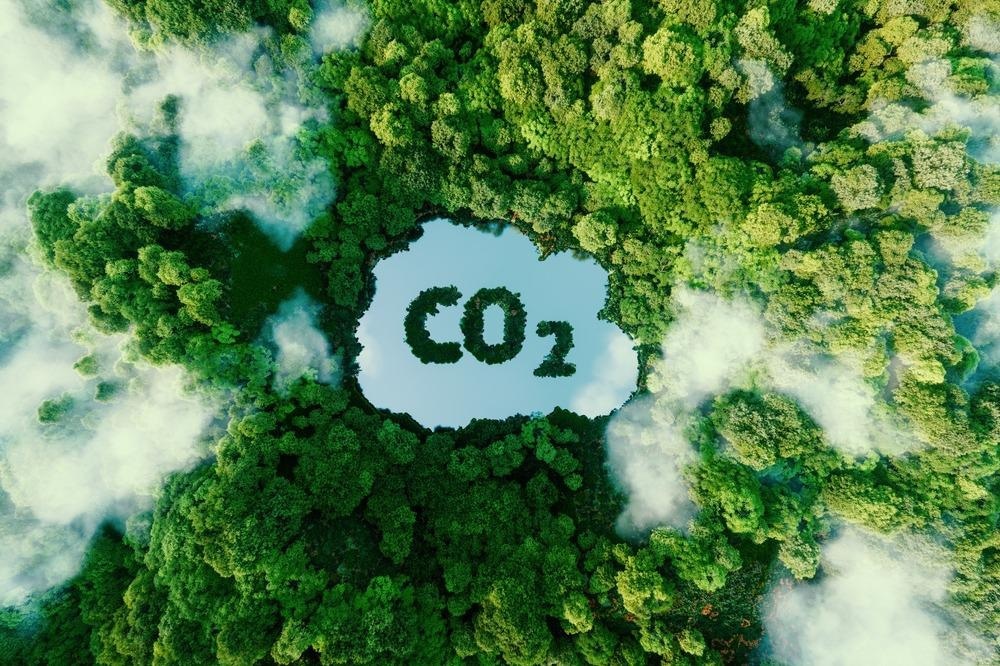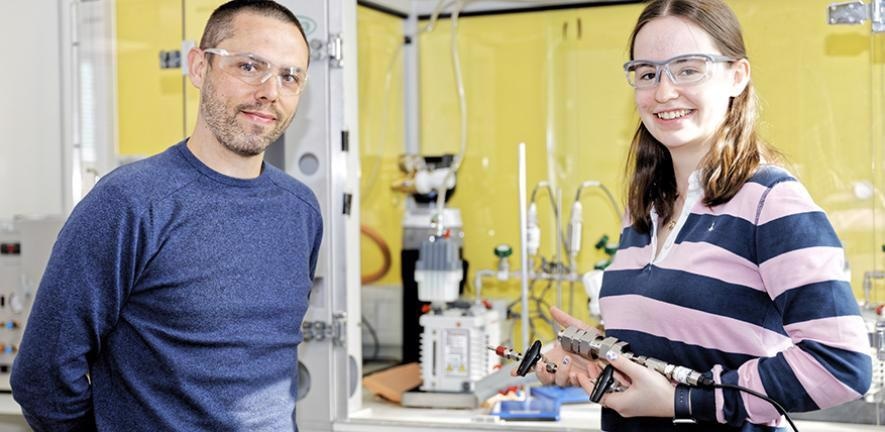Scientists have built a low-cost device capable of selectively capturing carbon dioxide gas while charging. When it ejects, the CO2 can be distributed in a controlled manner and accumulated to be reused or disposed of.

Image Credit: petrmalinak/Shutterstock.com
The supercapacitor device is the size of a two-pence coin and is created in part from sustainable materials such as coconut shells and seawater.
The supercapacitor, developed by scientists at the University of Cambridge, could help fuel carbon capture and storage innovations at a much cheaper price. Every year, approximately 35 billion tons of CO2 are discharged into the air, and alternatives to avoid these emissions and resolve the climate crisis are desperately needed. The most sophisticated carbon capture technologies are currently energy-intensive and costly.

Co-authors Israel Temprano and Grace Mapstone. Image Credit: Gabriella Bocchetti
The supercapacitor is made up of two electrodes, one positive and one negative in charge. The group tried interchanging from a negative to a positive voltage to broaden the charging time from previous trials in work led by Trevor Binford while completing his Master’s degree at Cambridge. This increased the ability of the supercapacitor to capture carbon.
We found that that by slowly alternating the current between the plates we can capture double the amount of CO2 than before.
Dr Alexander Forse, Study Lead and Professor, Yusuf Hamied Department of Chemistry, University of Cambridge
“The charging-discharging process of our supercapacitor potentially uses less energy than the amine heating process used in industry now. Our next questions will involve investigating the precise mechanisms of CO2 capture and improving them. Then it will be a question of scaling up,” Forse added.
The results are reported in the journal Nanoscale.
The biggest distinction between a supercapacitor and a rechargeable battery is how the two devices retain a charge. A battery relies on chemical reactions to store and emit charge, while a supercapacitor does not. It rather needs to rely on the movement of electrons between electrodes, so it degrades more slowly and has a longer lifetime.
The trade-off is that supercapacitors can’t store as much charge as batteries, but for something like carbon capture we would prioritize durability. The best part is that the materials used to make supercapacitors are cheap and abundant. The electrodes are made of carbon, which comes from waste coconut shells.
Grace Mapstone, Study Co-Author, University of Cambridge
“We want to use materials that are inert, that don’t harm environments, and that we need to dispose of less frequently. For example, the CO2 dissolves into a water-based electrolyte which is basically seawater,” Mapstone said.
However, this supercapacitor does not acquire CO2 on its own—it must be charged in a way to garner CO2. When the electrodes become charged, the negative plate absorbs CO2 gas while neglecting other emissions that do not contribute to global climate change, like oxygen, nitrogen, and water. The supercapacitor captures carbon while also storing energy using this technique.
Dr. Israel Temprano, a co-author, continued to work by constructing a gas analytical method for the device. The method employs a pressure sensor that detects changes in gas adsorption in an electrochemical device.
The findings from Temprano’s contribution help in better understanding the mechanism at work inside the supercapacitor when CO2 is absorbed and released. Acknowledging these processes, potential losses, and degradation routes are all necessary before the supercapacitor can be fully implemented.
“This field of research is very new so the precise mechanism working inside the supercapacitor still isn’t known,” said Temprano.
Dr. Forse received a Future Leaders Fellowship from the UK Research and Innovation scheme, which is dedicated to building the next generation of excellent research and technology.
Journal Reference
Binford, T. B., et al. (2022) Enhancing the capacity of supercapacitive swing adsorption CO2 capture by tuning charging protocols. Nanoscale. doi.org/10.1039/D2NR00748G.